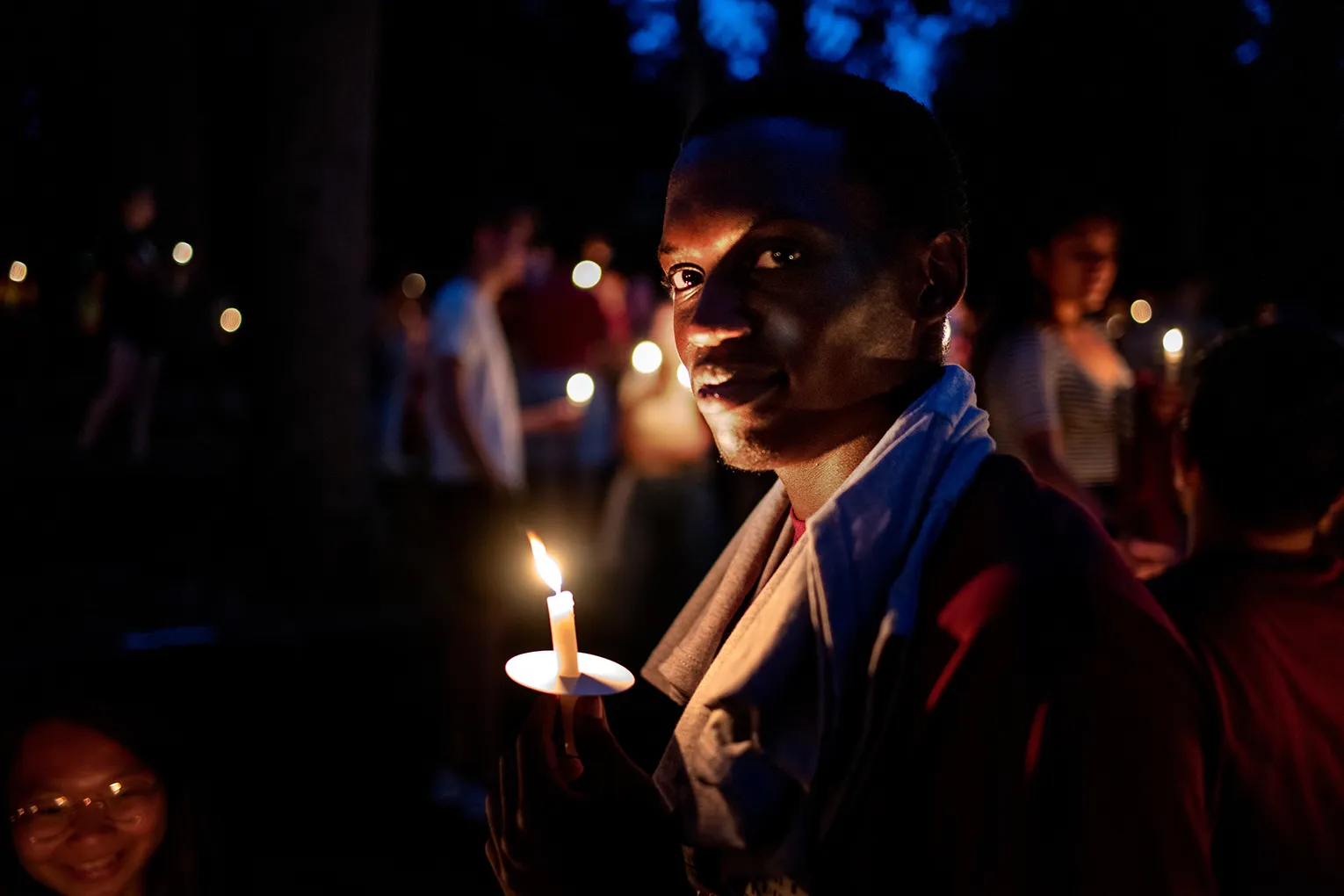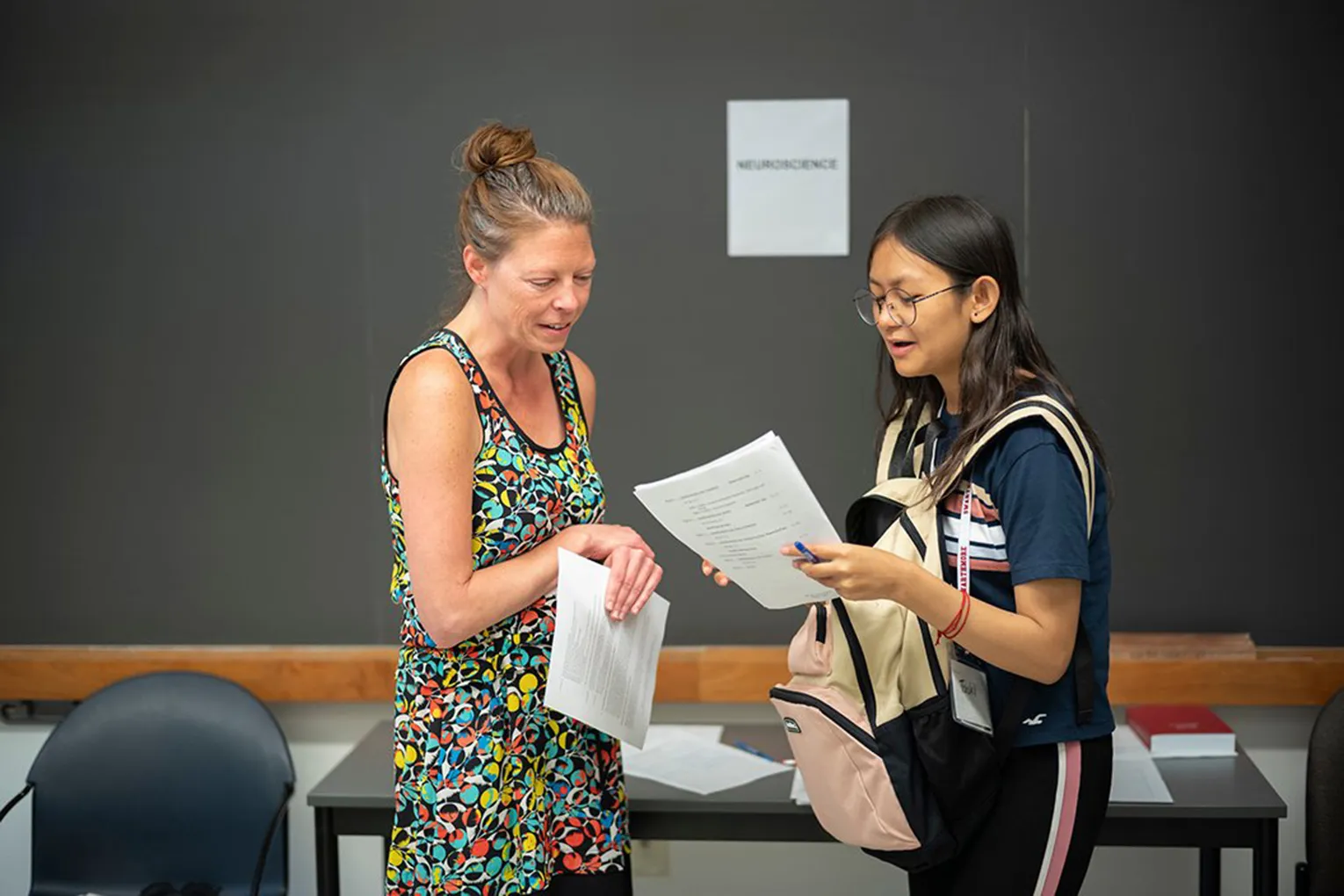Student research - history
My deepest thanks to the wonderful students with whom I have worked:
| Student | After Swarthmore |
| Sylvia Xi '25 | |
| Ivan Fransazov '24 | Software engineer |
| Anna Jing '24 | MSc student Mathematical Finance - Courant Institute (NYU) |
| Ben Drucker '22 | Computational Biology Technician - Pacific Northwest National Laboratory |
| Noah Parks '22 | PhD student Applied Mathematics - Universitiy of Colorado Boulder |
| Qianyi (Angelina) Cao '22 | Analyst - Analysis Group |
| JJ Balisanyuka-Smith '21 | Software engineer and AI - Cohere |
| Madison Shorka '20 | PhD student Mathematics - Temple University |
Students have co-authored papers with me, presented their work at national conferences, and helped me to obtain grant funding, among other contributions.
Read more about their work below.
Summer 2023: Modeling axon initial segment plasticity in the MSO
Ivan Fransazov '24
The small region of the axon that is adjacent to the soma is called the axon initial segment (AIS). The AIS can be the site of spike initiation and thus plays an important role in neural signaling and computation. Research has demonstrated that the size and physiology of the AIS can change depending on synaptic input history, and development of the AIS can be altered by periods of sound deprivation. Ivan expanded on Anna and Sylvia's work to show that possible changes to the AIS caused by sound deprivation may degrade the sensitivity of MSO neurons to sound source location.
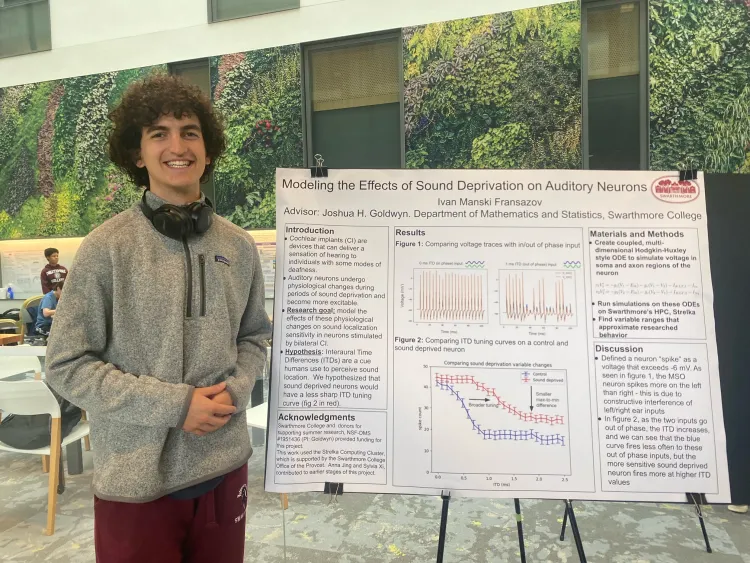
Summer 2022: Modeling ANF and MSO neural responses to cochlear implant stimulation
Anna Jing '24 and Sylvia Xi '25
Cochlear implants are surgically-implanted devices that can provide some sense of auditory sensation, in some cases, for individuals with hearing loss. Users of these devices can have difficulty determining the location of sound sources in their environment ("sound source localization"). To investigate the neural representation of sound source location in the early auditory pathway, Anna and Sylvia developed a computational model to simulate how auditory nerve fibers and medial superior olive neurons respond to cochlear implant stimulation. Anna and Sylvia presented their work at the Swarthmore Sigma Xi poster session and the Sigma Xi IFORE conference

Summer 2021: High-frequency coincidence detection in the barn owl nucleus laminaris
Ben Drucker '22
Barn owls are high-frequency hearing specialists. Remarkably, neurons in a region called the nucleus laminaris are sensitive to submillisecond time-differences in sounds with kilohertz-scale frequencies. Ben developed differential-equations-based models for these neurons and explored how their structure (soma-axon coupling configuration) specializes these neurons for temporal precision. Ben found that weak backward coupling enables these neurons to respond to the high-frequency fluctuations in their inputs that carry information about sound source location. Ben presented his work at the Swarthmore Sigma Xi poster session (see below). You can read more about Ben's experience in this article in the Swarthmore Bulletin.
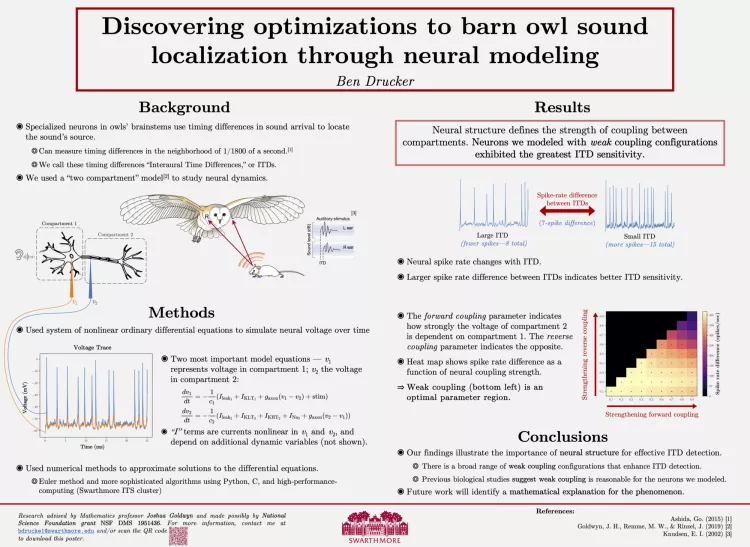
Summer 2020: Dynamics of the auditory continuity illusion
Qianyi (Angelina) Cao '22 and Noah Parks '22
Perception and neural dynamics can often be probed through the study of illusions. Qianyi and Noah used differential equations methods to develop an original model of neural dynamics for the auditory continuity illusion. They presented their work as the annual meeting of student research conference organized by Sigma Xi (held remotely, due to COVID).
Their presentation can be viewed here
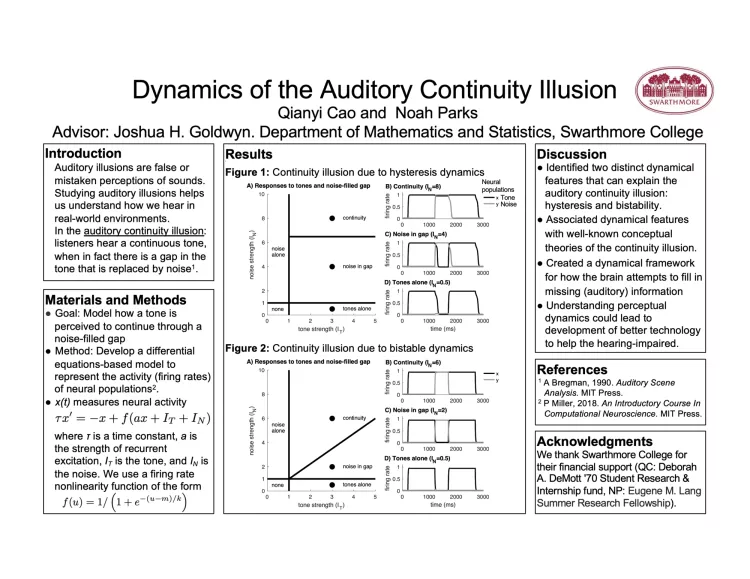
Summer 2019: A minimal model of MSO axon dynamics
Madison Shoraka '20 and JJ Balisanyuka-Smith '21

Summer 2019 student researchers: Madison Shoraka '20 and JJ Balisanyuka-Smith '21
Neurons in an auditory brain stem region called the medial superior olive (MSO) help us to determine the locations of sound sources in the environment. They do this by responding, with submillisecond temporal precision, to the timing of their inputs. Specifically, the MSO neurons receive inputs that origniate from both ears, and fire maximally when the inputs arrive at nearly the same time. For this reason, MSO neurons are known as coincidence detector neurons. Understanding the unique features of MSO neurons that specialize these cells for temporally-precise coincidence detection advances our knowledge of how the auditory systems creates a sense of space and, more generally, how neurons extract timing information from their inputs.
Mads and JJ constructed a model of an MSO neuron to analyze the spiking dynamics of these neurons. They showed that a biophysically-detailed and computationally intensive model (previously published in the literature) could be approximated by using what we call a two-compartment model. The two-compartment model describes two regions of the cell: the soma and dendrite regions are grouped into one compartment, and the axon regions are grouped into the second compartment. Mads and JJ determined how to parameterize this two-compartment model in a principled way to accurately approximate dynamics and spiking of the detailed model.
Their original research provides a new model we can use use to investigate MSO dynamics (simpler to analyze and simulate than the detailed model). The parameterization procedure they developed can also be used by other computational neuroscientists to accurately approximate detailed models of axons with the more parsimonious two-compartment framework.

